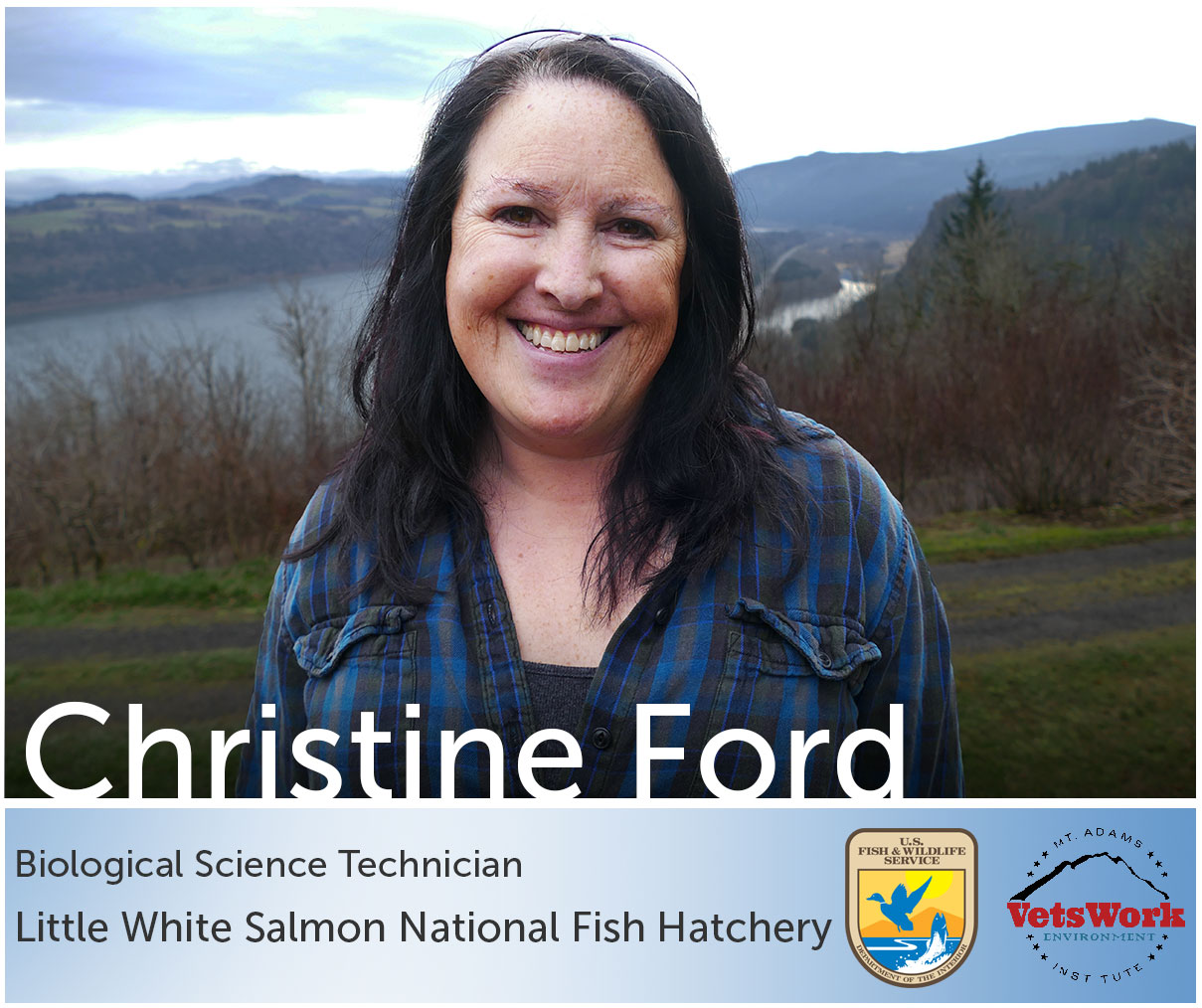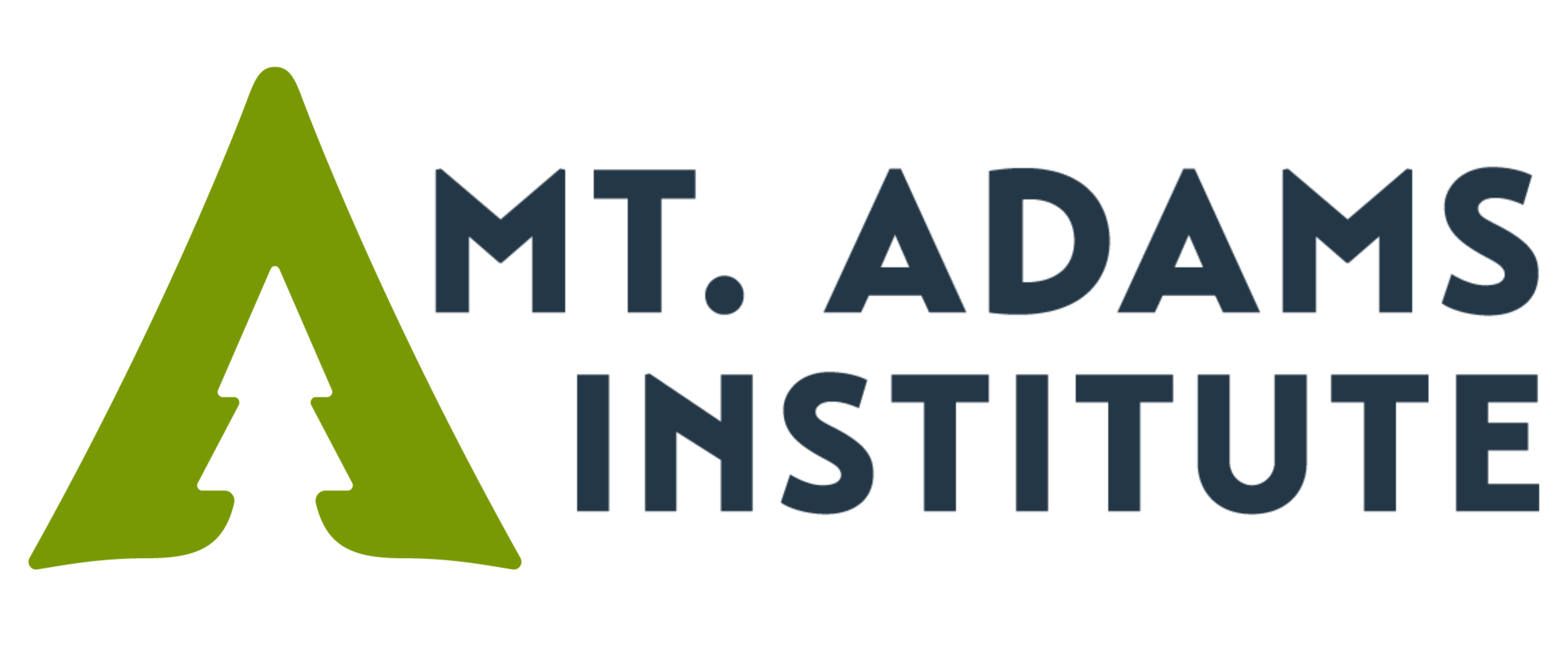
My first month as a VetsWork AmeriCorps intern with the Mt. Adams Institute, living and working in the Columbia River Gorge National Scenic Area has been awesome! I moved here from New England, not knowing what to expect. Would this be the start of a career, or just a year of cheap labor? Hopeful that it would be the former, I packed up my belongings and drove across the country. As I arrived in the Gorge, I fell in love – I couldn’t believe this was where I was going to live and work for a year, and maybe longer.
The first month at my job site, working as a biological science technician at the Little White Salmon National Fish Hatchery, has been eye-opening. Having a degree in marine and freshwater biology, I had a general understanding of how a fish hatchery worked, but I didn’t realize all the activities that went into raising Chinook salmon. My day-to-day duties include feeding fish, observing them for signs of stress or disease, and cleaning the raceways they are kept in. It also includes more detailed tasks, such as checking and regulating water quality, and calculating feed based on fish age and development stage. We currently have three populations of Chinook salmon at the hatchery: 1.8 million summer 2016-spawned spring Chinook salmon smolt that will be released this April, 1.8 million summer 2017-spawned spring Chinook salmon fry that will be released in April 2019, and 5.7 million fall 2017-spawned upriver bright fall Chinook salmon alevins that will be released in July 2018.
While my job is pretty repetitive right now, I try to keep the bigger picture in mind. With the sharp decline in salmon due to overfishing in the late-1800’s, and the loss of stream habitat (for salmon spawning) from the construction of dams in the early to mid-1900’s, as well as increased agriculture and urbanization, the role of hatcheries became even more important. Currently, the Columbia River Basin supports about 1 ½ million salmon a year, down from 14 million in the 1800’s, with around 75% of today’s salmon being hatchery-raised. Hatchery-raised salmon help honor the 1855 treaties between the U.S. and Northwest Native American Tribes, allowing them to fish for salmon in their “usual and accustomed places” in perpetuity. Additionally, salmon provide commercial and recreational fishing opportunities. As the year progresses, we will be releasing the 2016 spring Chinook and the 2017 fall Chinook, as well as preparing for the spawning seasons of both spring and fall Chinook, which will allow me to experience the entire salmon life cycle. In the interim, I work with a great group of people, am supported by the Mt. Adams Institute, and get to live in an incredibly beautiful place!

